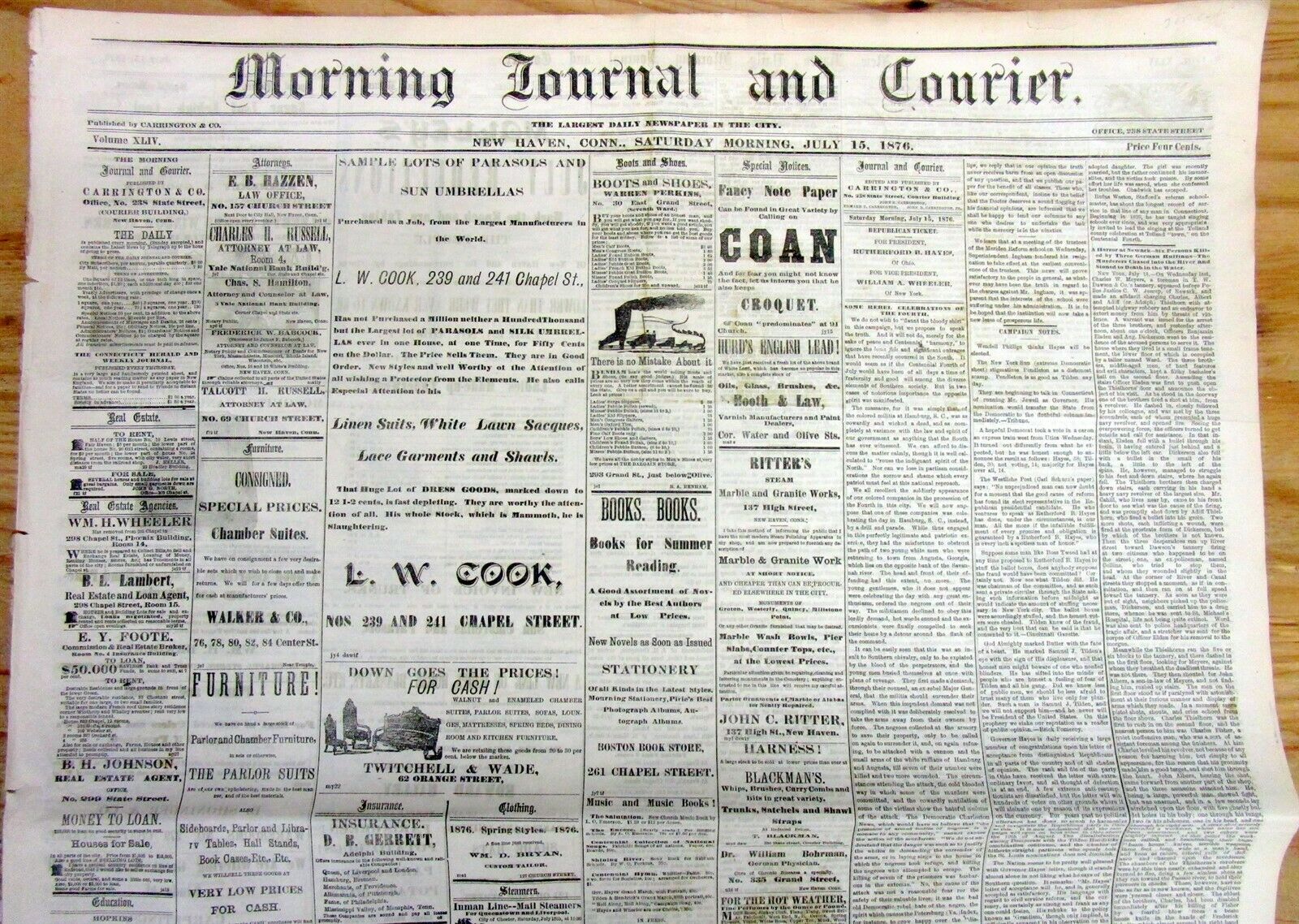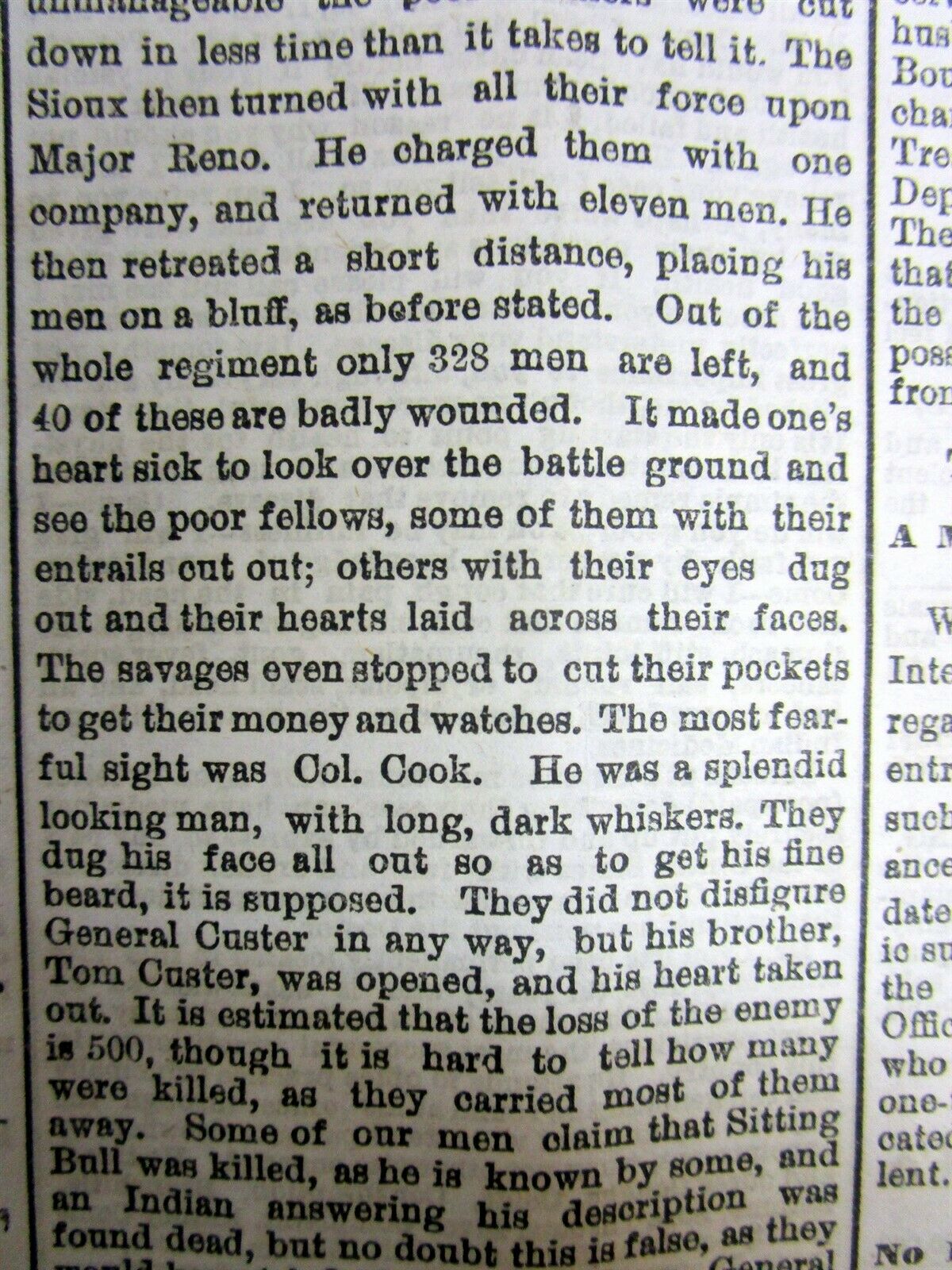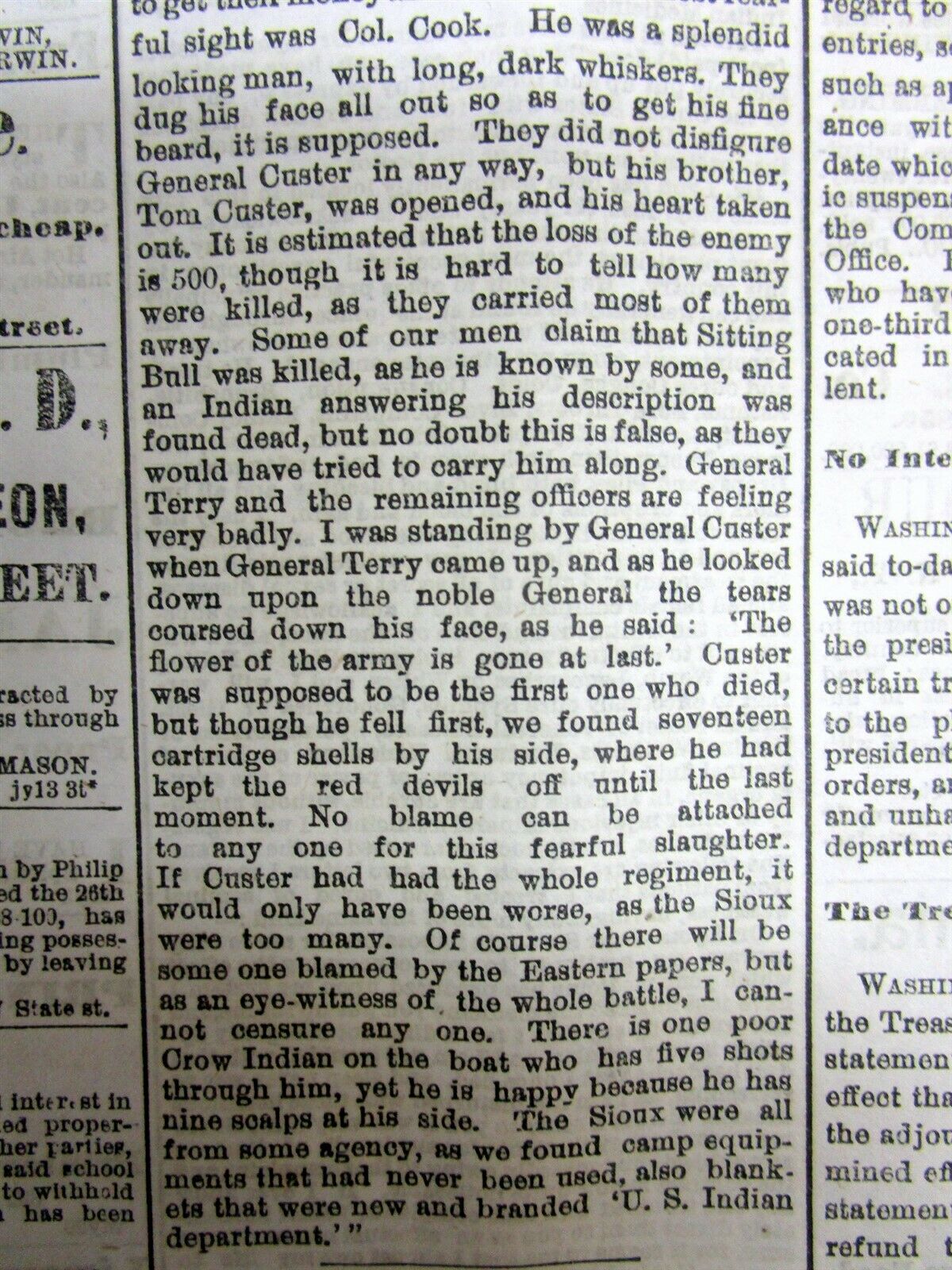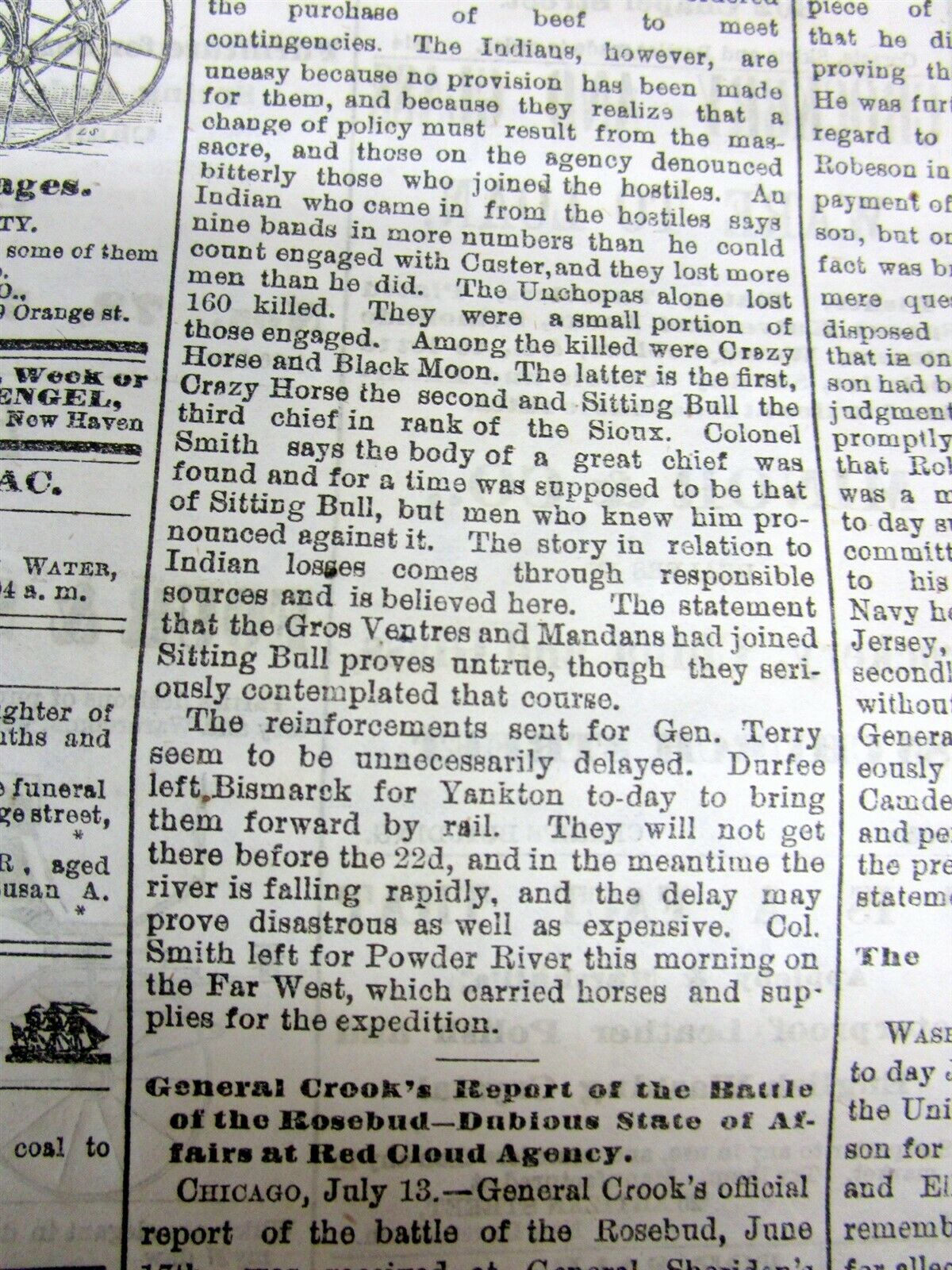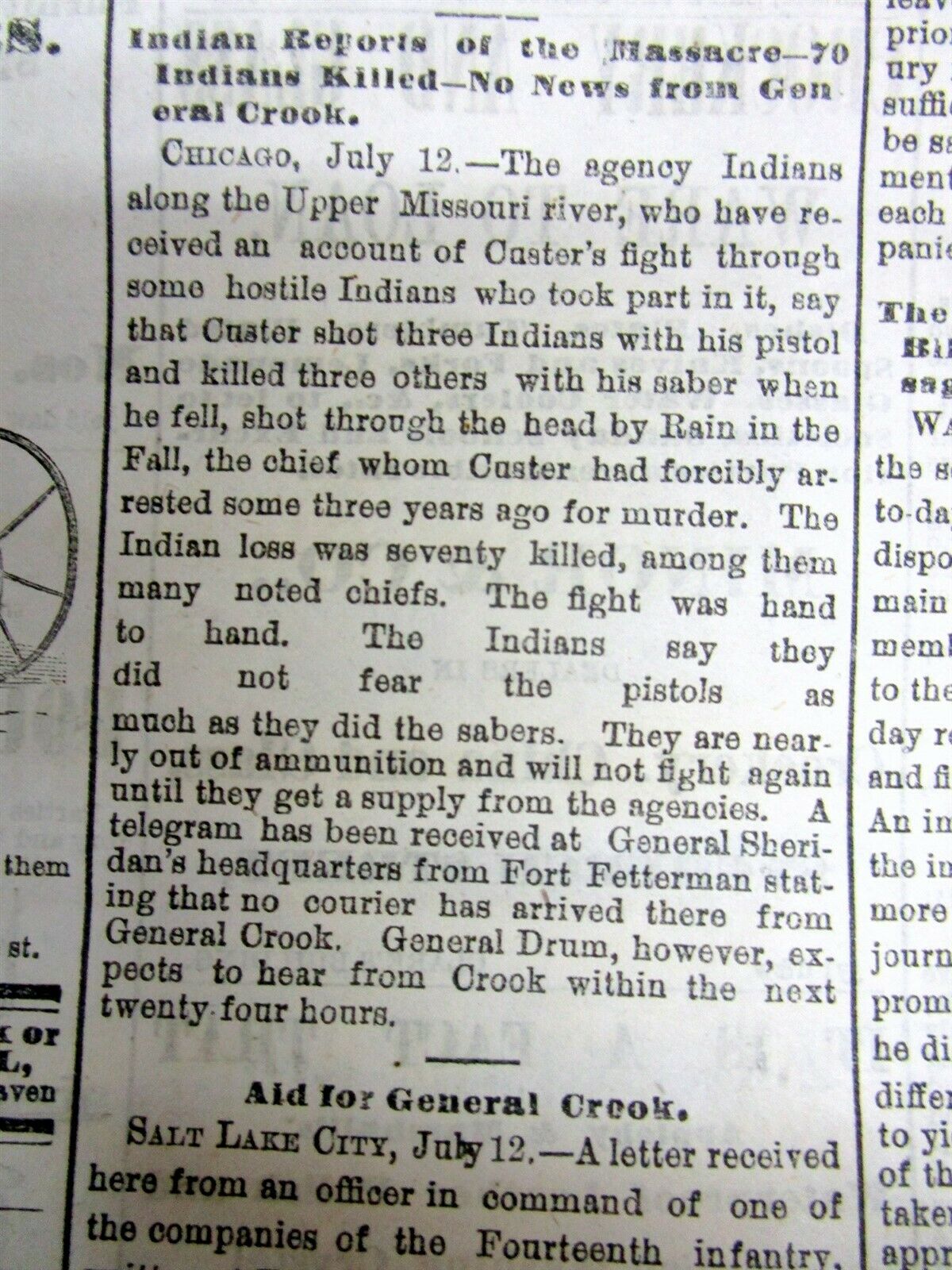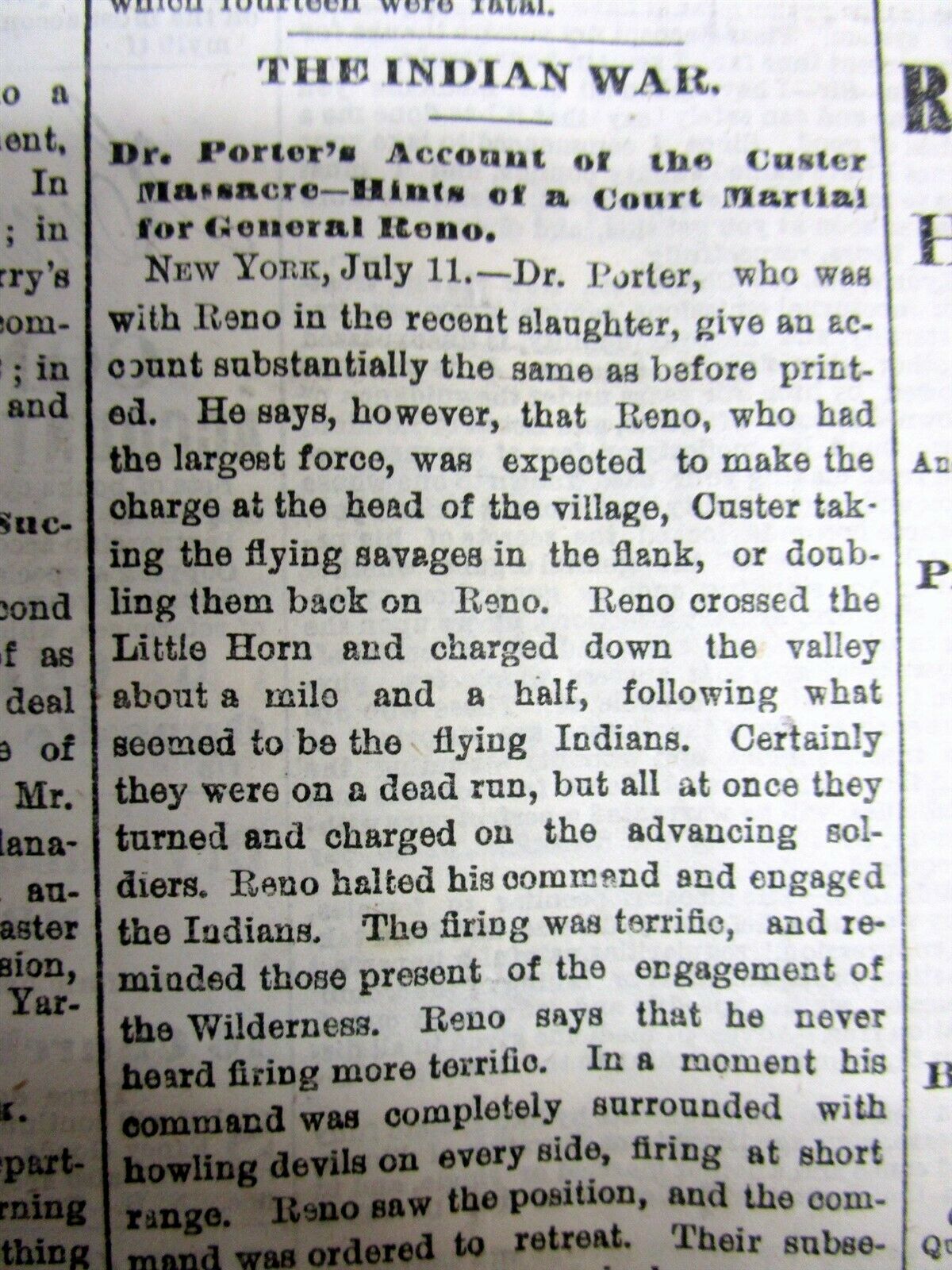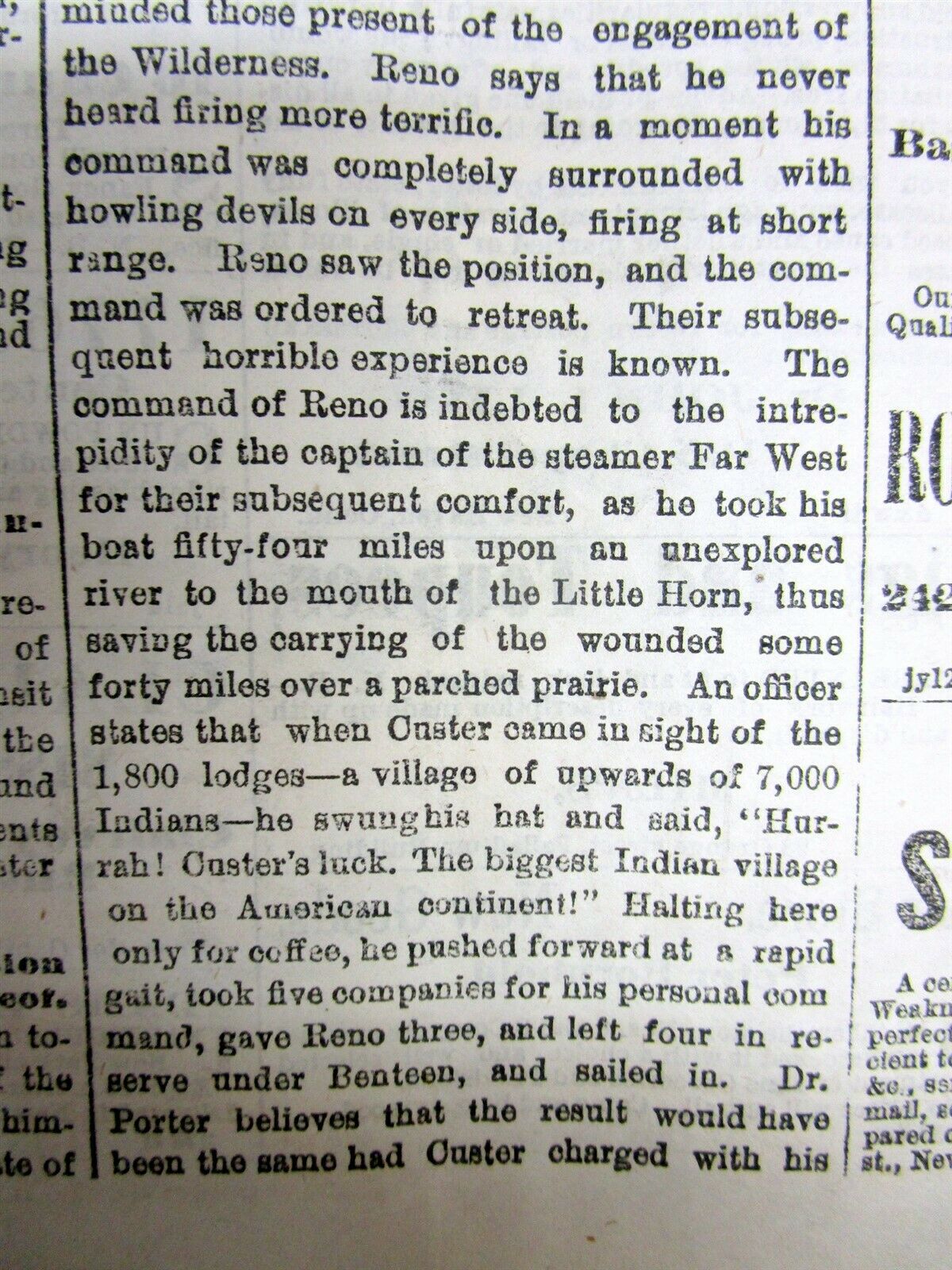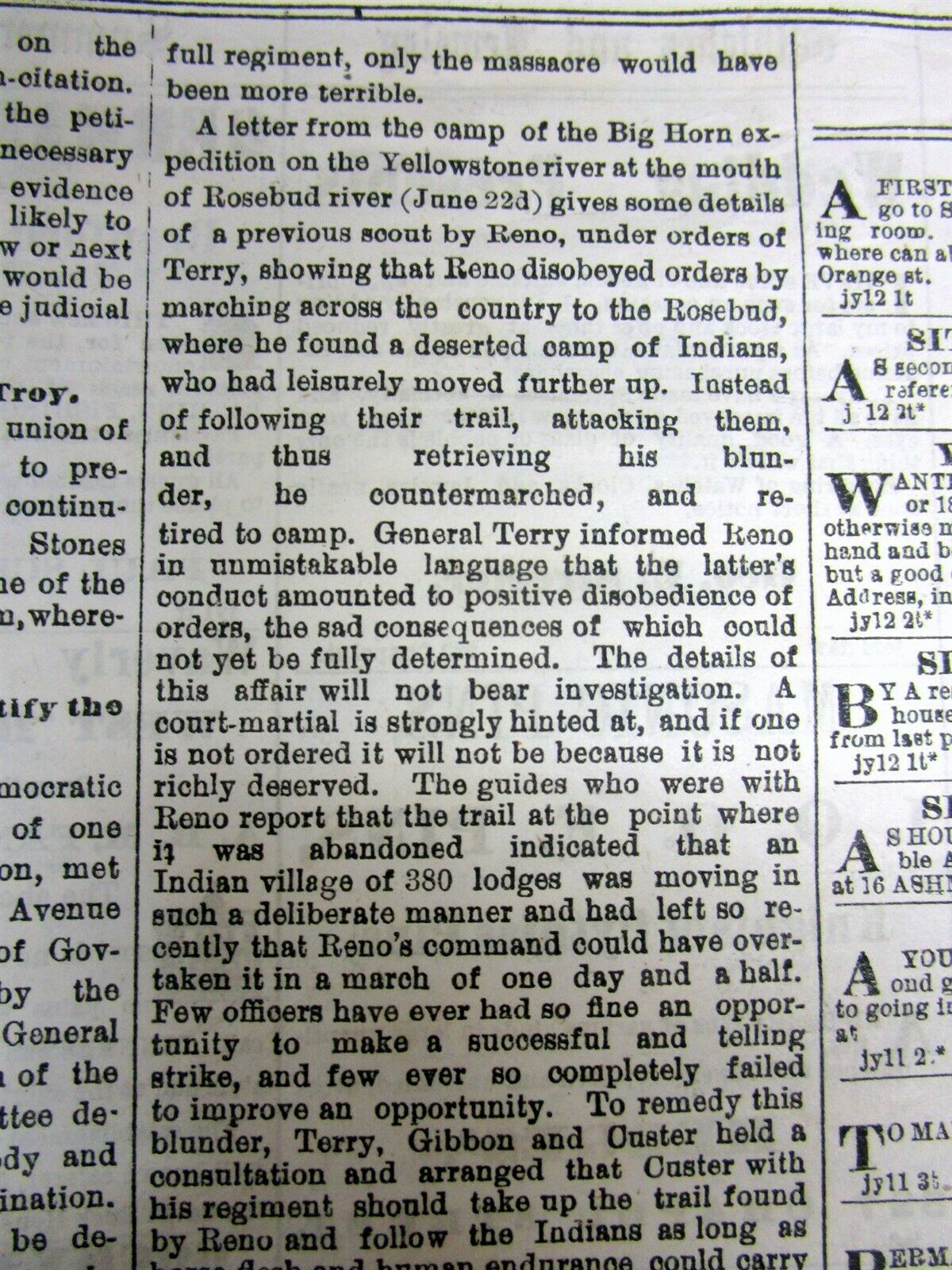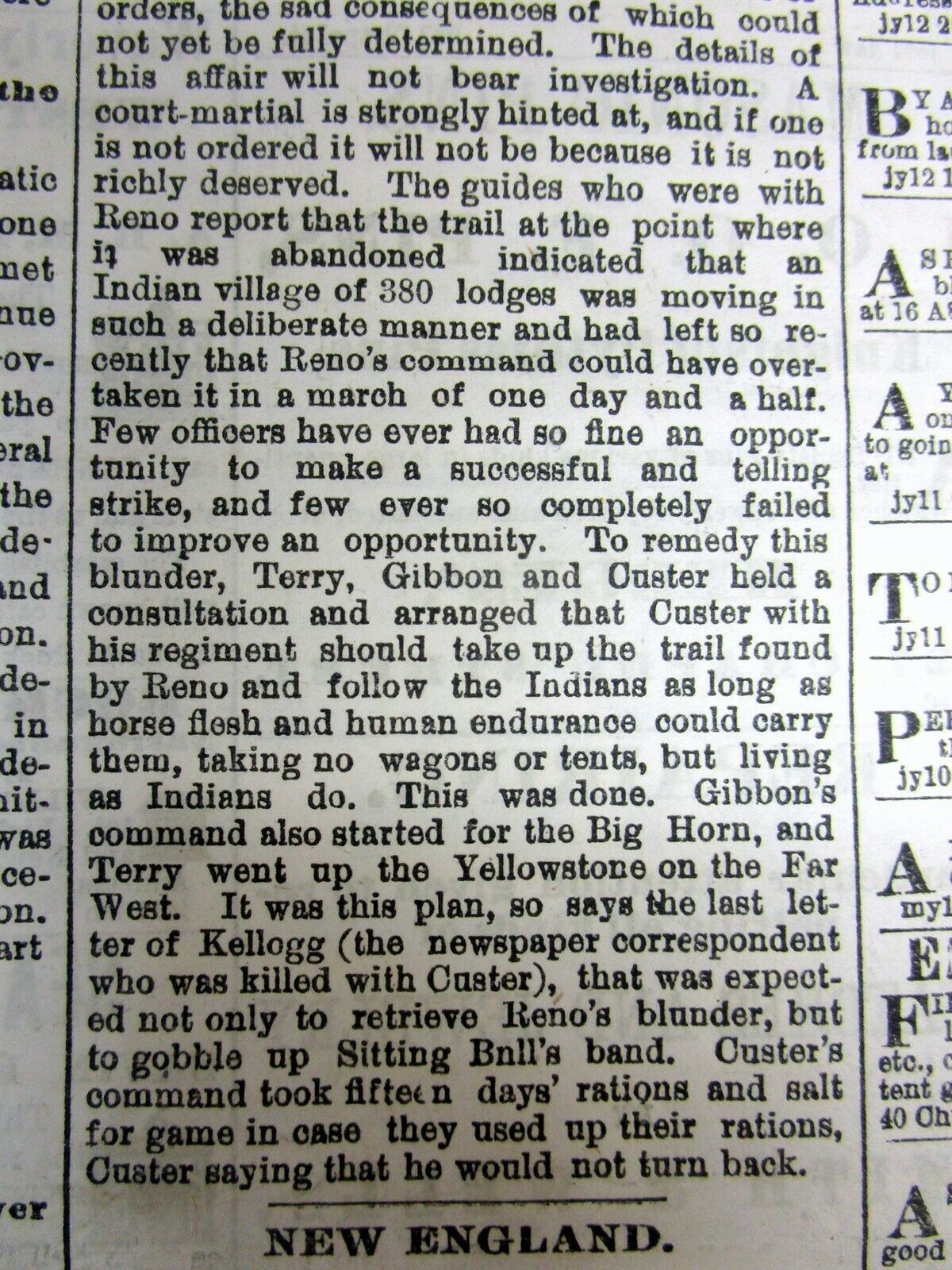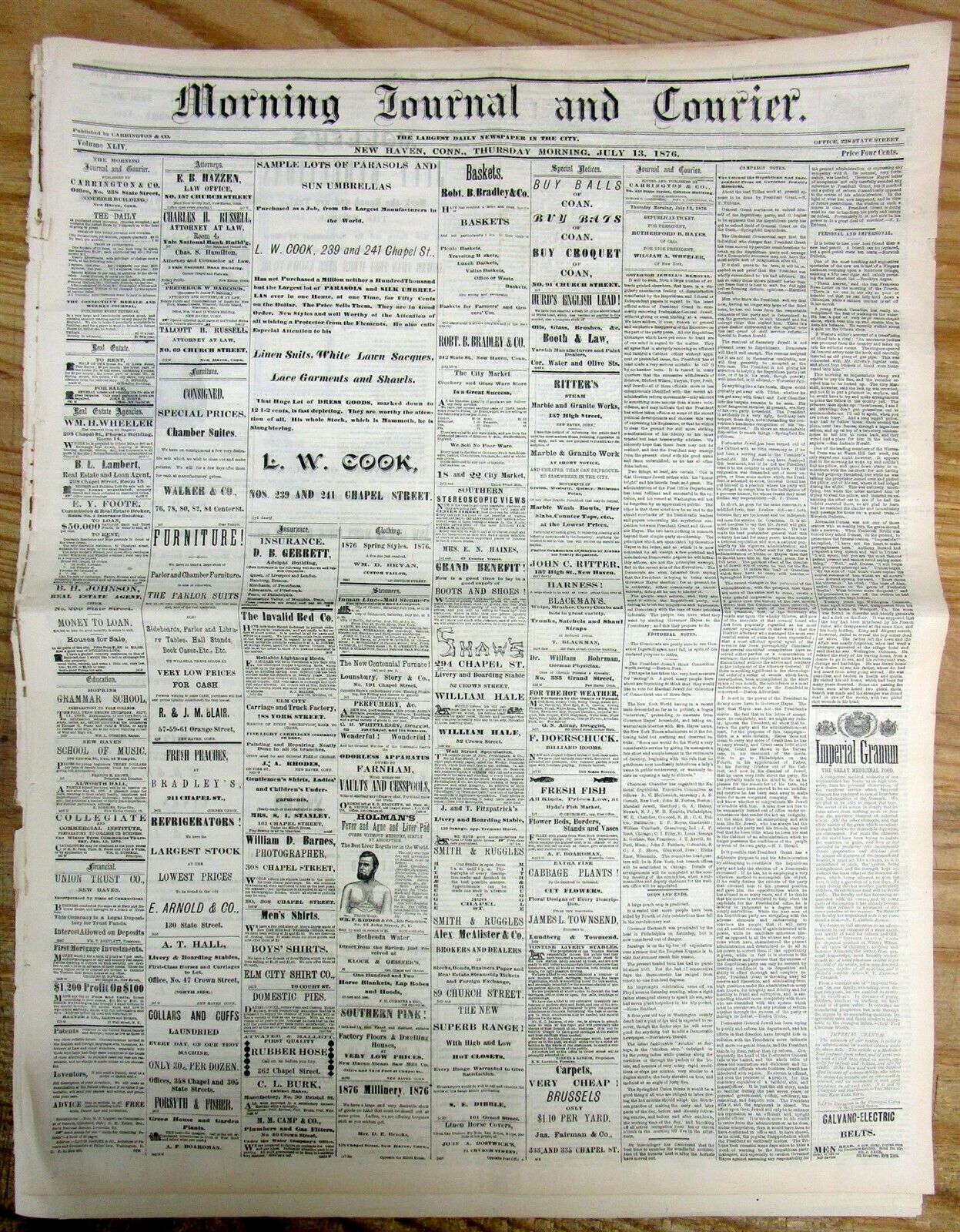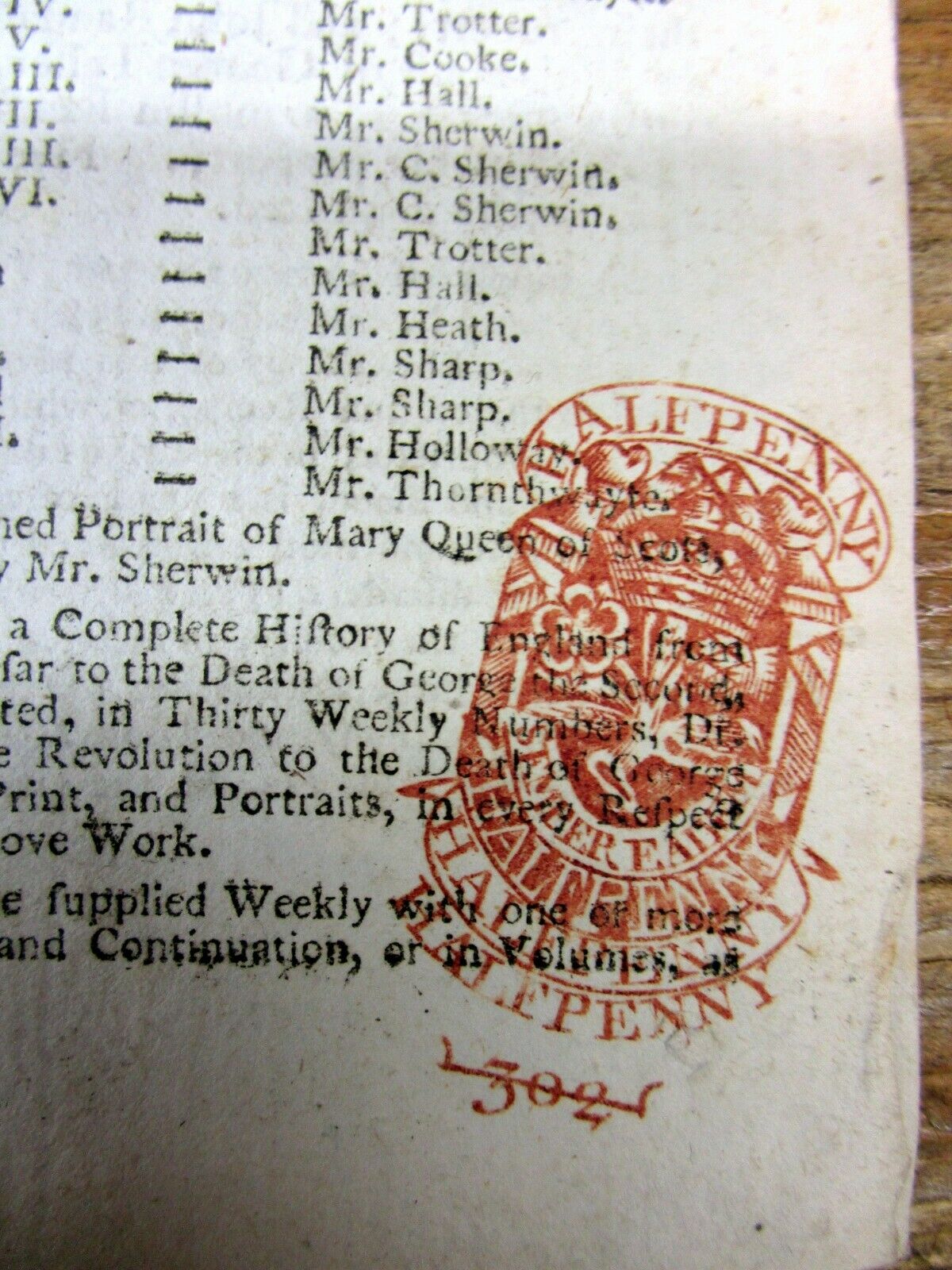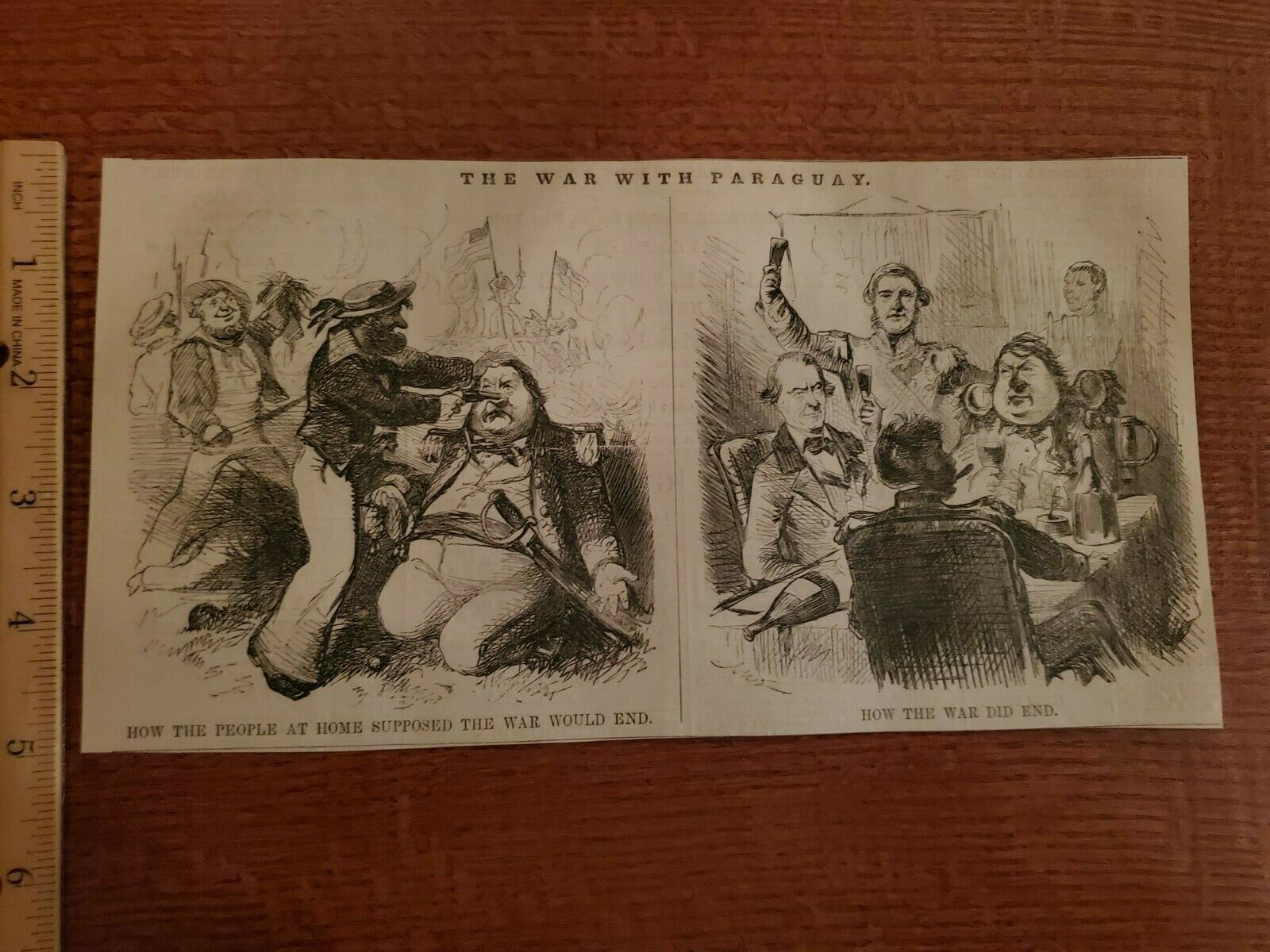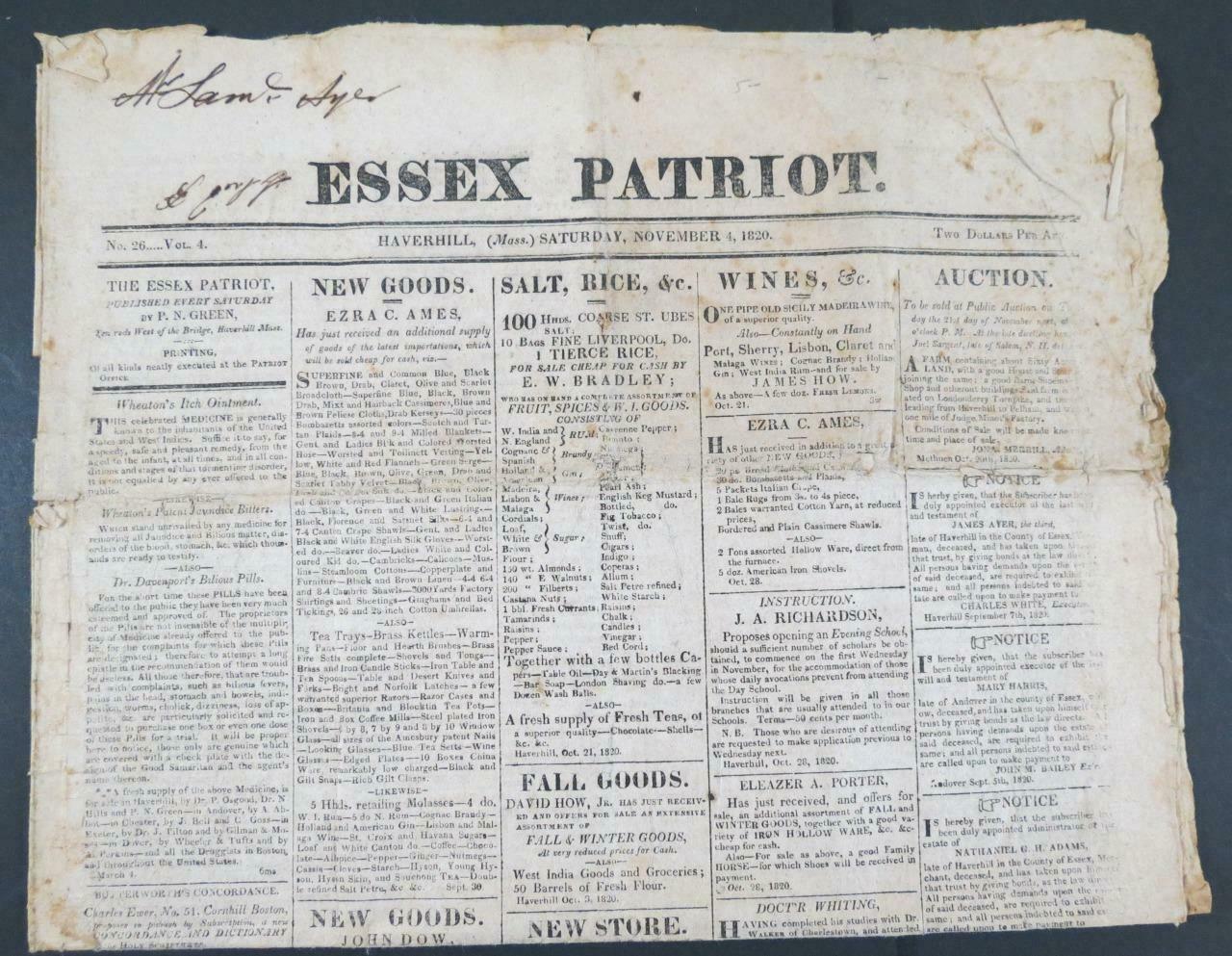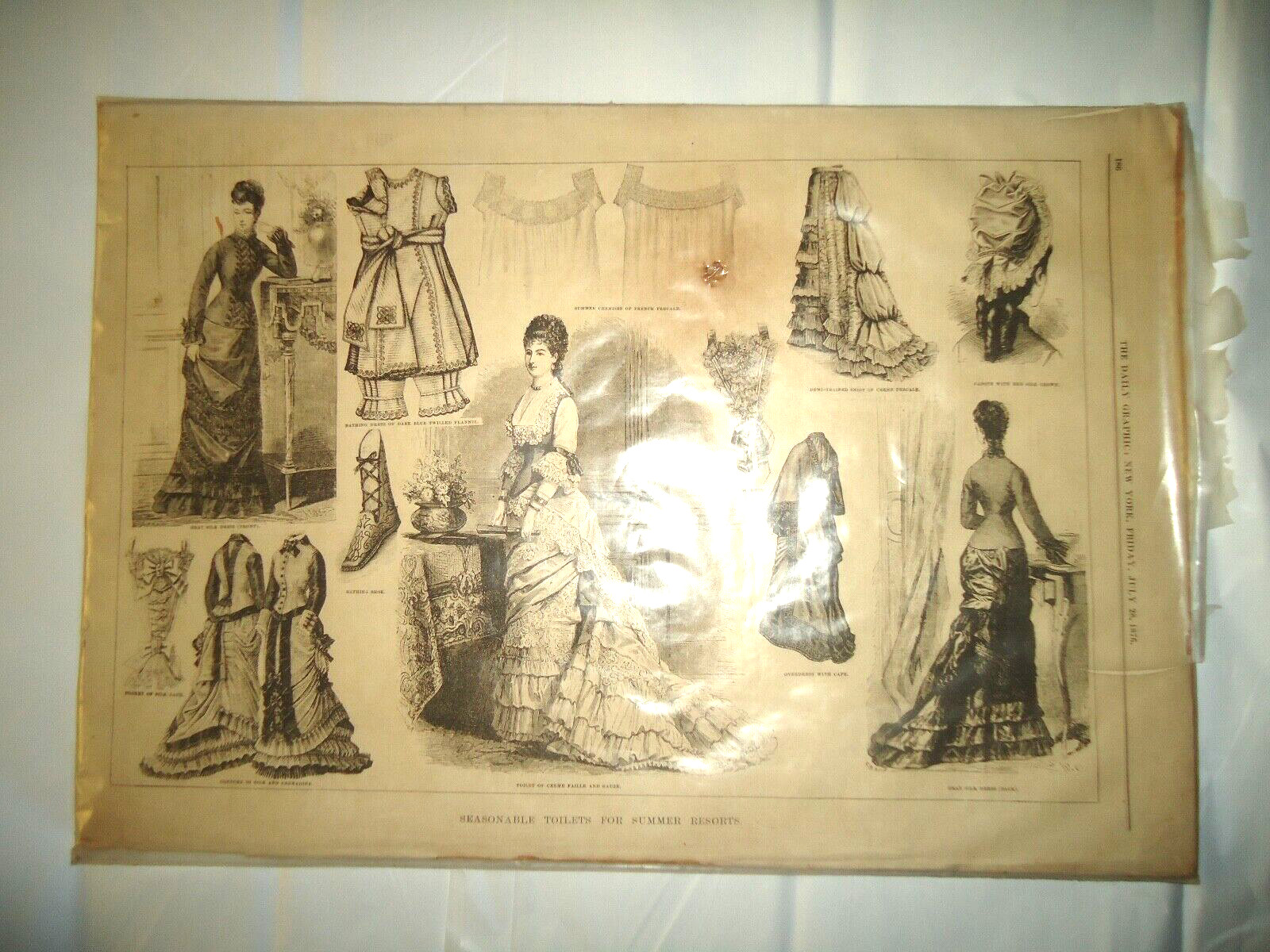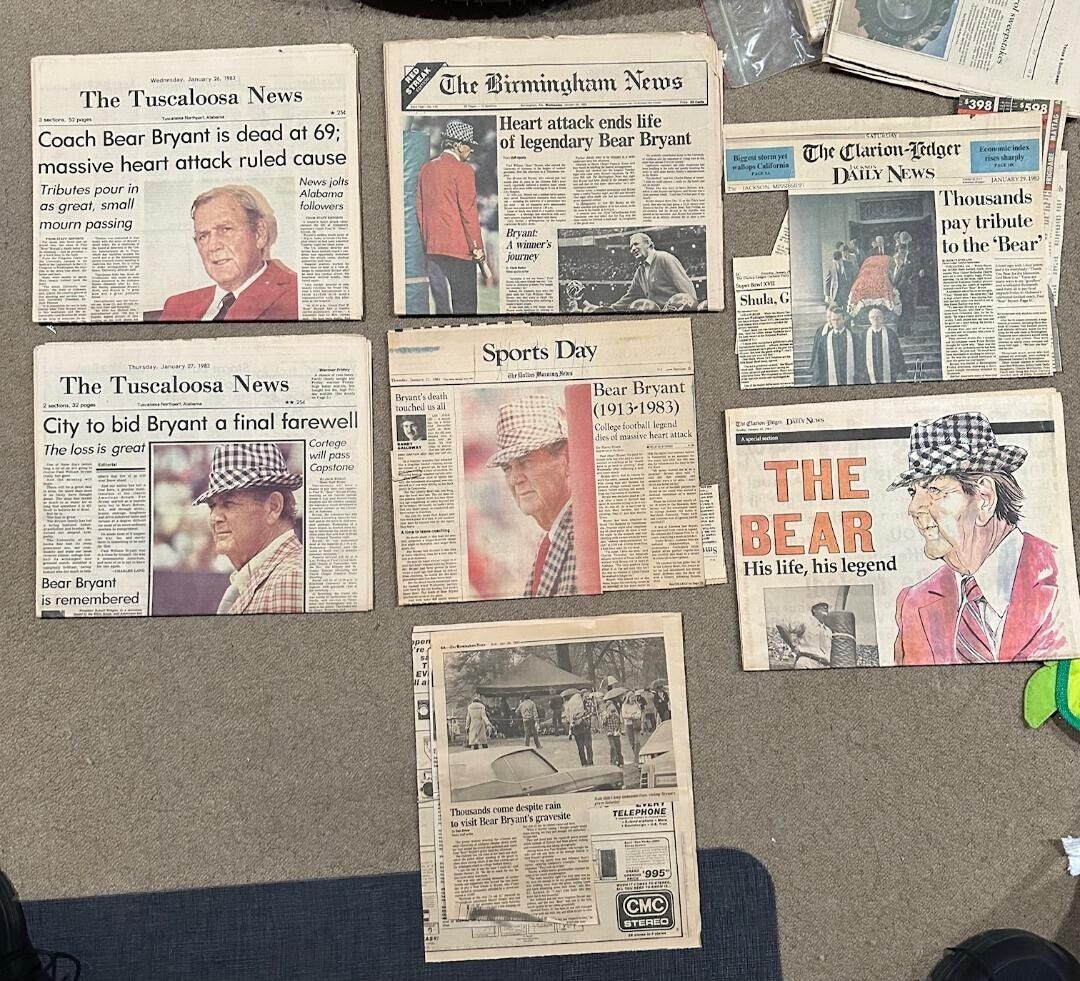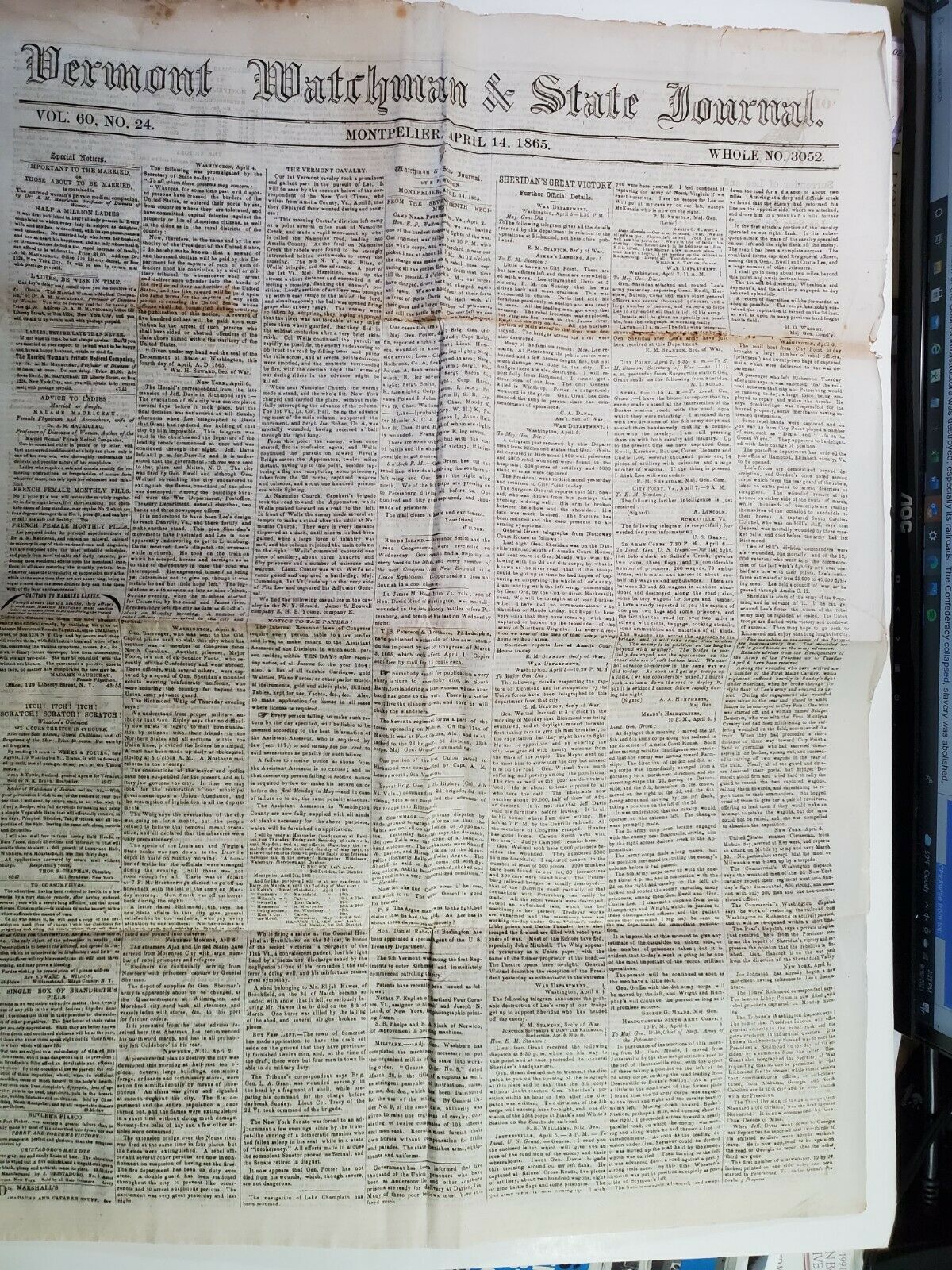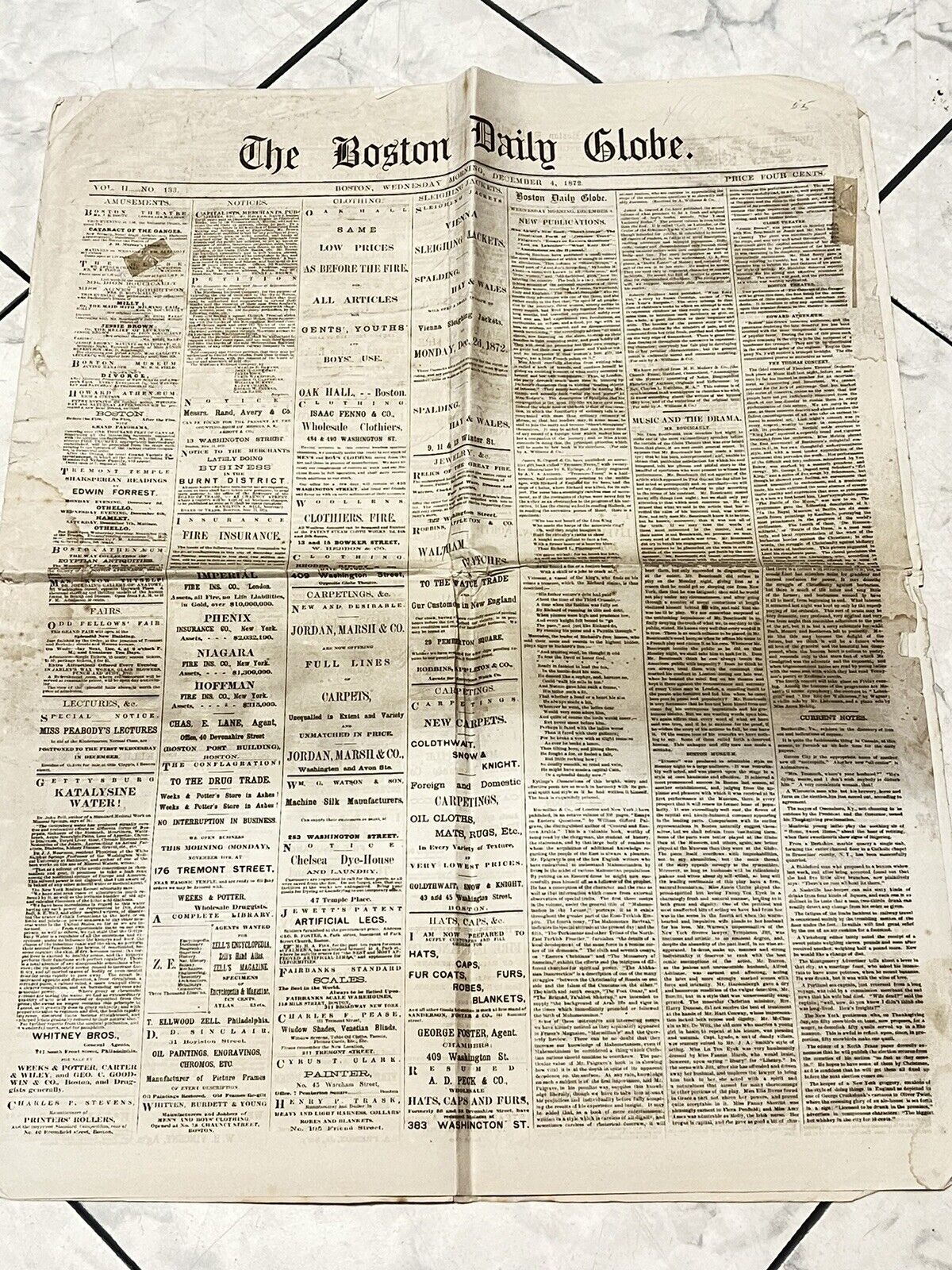-40%
4 1876 newspapers CUSTER MASSACRE Battle of Little Big Horn w INDIAN CRAZY HORSE
$ 132
- Description
- Size Guide
Description
4 1876 newspapers CUSTER MASSACRE Battle of Little Big Horn w INDIAN CRAZY HORSE4 1876 newspapers with long detailed contemporary coverage of the CUSTER MASSACRE Battle of Little Big Horn led by INDIAN Chief CRAZY HORSE
- inv # 5Z-237
Please visit our
EBAY STORE
for THOUSANDS MORE HISTORICAL NEWSPAPERS for SALE or at auction
SEE PHOTO(s) - Four (4) COMPLETE ORIGINAL NEWSPAPERs, the
New Haven Morning Journal
(CT) dated July 12, 13, 14, and 15, 1876. These 4 original newspapers contain inside page long and detailed contemporary coverage of the
BATTLE of LITTLE BIG HORN (the CUSTER MASSACRE by the Sioux Indians led by Chief CRAZY HORSE).
The Battle of the Little Bighorn, fought on June 25, 1876, near the Little Bighorn River in Montana Territory, pitted federal troops led by Lieutenant Colonel George Armstrong Custer (1839-76) against a band of Lakota Sioux and Cheyenne warriors. Tensions between the two groups had been rising since the discovery of gold on Native American lands. When a number of tribes missed a federal deadline to move to reservations, the U.S. Army, including Custer and his 7th Cavalry, was dispatched to confront them. Custer was unaware of the number of Indians fighting under the command of Sitting Bull (c.1831-90) at Little Bighorn, and his forces were outnumbered and quickly overwhelmed in what became known as Custer’s Last Stand.
Sitting Bull and Crazy Horse (c.1840-77), leaders of the Sioux on the Great Plains, strongly resisted the mid-19th-century efforts of the U.S. government to confine their people to Indian reservations. In 1875, after gold was discovered in South Dakota’s Black Hills, the U.S. Army ignored previous treaty agreements and invaded the region. This betrayal led many Sioux and Cheyenne tribesmen to leave their reservations and join Sitting Bull and Crazy Horse in Montana. By the late spring of 1876, more than 10,000 Native Americans had gathered in a camp along the Little Bighorn River–which they called the Greasy Grass–in defiance of a U.S. War Department order to return to their reservations or risk being attacked.
In mid-June, three columns of U.S. soldiers lined up against the camp and prepared to march. A force of 1,200 Native Americans turned back the first column on June 17. Five days later, General Alfred Terry ordered George Custer’s 7th Cavalry to scout ahead for enemy troops. On the morning of June 25, Custer, a West Point graduate, drew near the camp and decided to press on ahead rather than wait for reinforcements.
At mid-day on June 25, Custer’s 600 men entered the Little Bighorn Valley. Among the Native Americans, word quickly spread of the impending attack. The older Sitting Bull rallied the warriors and saw to the safety of the women and children, while Crazy Horse set off with a large force to meet the attackers head on. Despite Custer’s desperate attempts to regroup his men, they were quickly overwhelmed. Custer and some 200 men in his battalion were attacked by as many as 3,000 Native Americans; within an hour, Custer and all of his soldiers were dead.
The Battle of the Little Bighorn, also called Custer’s Last Stand, marked the most decisive Native American victory and the worst U.S. Army defeat in the long Plains Indian War. The demise of Custer and his men outraged many white Americans and confirmed their image of the Indians as wild and bloodthirsty. Meanwhile, the U.S. government increased its efforts to subdue the tribes. Within five years, almost all of the Sioux and Cheyenne would be confined to reservations.
Good-Very good condition. This listing includes the 4 original newspapers, NOT just a clipping or a page of them. STEPHEN A. GOLDMAN HISTORICAL NEWSPAPERS stands behind all of the items that we sell with a no questions asked, money back guarantee. Every item we sell is an original newspaper printed on the date indicated at the beginning of its description. U.S. buyers pay priority mail postage which includes waterproof plastic and a heavy cardboard flat to protect the purchased item from damage in the mail. Upon request by the buyer, we can ship by USPS Media Mail to reduce postage cost; however, please be aware that USPS Media Mail can be very slow in its time of transit to the buyer. International postage is quoted when we are informed as to where the package is to be sent. We do combine postage (to reduce postage costs) for multiple purchases sent in the same package.
We list thousands of rare newspapers with dates from 1570 through 2004 on Ebay each week. This is truly SIX CENTURIES OF HISTORY that YOU CAN OWN!
Stephen A. Goldman Historical Newspapers has been in the business of buying and selling historical newspapers for over 50 years. Dr. Goldman is a consultant to the Freedom Forum Newseum and a member of the American Antiquarian Society. You can buy with confidence from us, knowing that we stand behind all of our historical items with a 100% money back guarantee. Let our 50+ years of experience work for YOU ! We have hundreds of thousands of historical newspapers (and their very early precursors) for sale.
Stephen A. Goldman Historical Newspapers
has been in the business of buying and selling historical newspapers for over 50 years. We are located in the charming Maryland Eastern Shore town of OXFORD, Maryland.
Dr. Goldman is a consultant to the Freedom Forum Newseum and a member of the American Antiquarian Society. You can buy with confidence from us, knowing that we stand behind all of our historical items with a 100% money back guarantee. Let our 50+ years of experience work for YOU ! We have hundreds of thousands of historical newspapers (and their very early precursors) for sale.
We invite customer requests for historical newspapers that are not yet located in our extensive Ebay listing of items. With an inventory of nearly a million historical newspapers (and their early precursors) we are likely have just the one
YOU
are searching for.
WE ARE ALSO ACTIVE BUYERS OF HISTORICAL NEWSPAPERS, including large and small personal collections, bound volumes, significant individual issues, or deaccessions from libraries and historical societies. IF YOU WANT TO SELL, WE WANT TO BUY !!!
Powered by SixBit's eCommerce Solution
